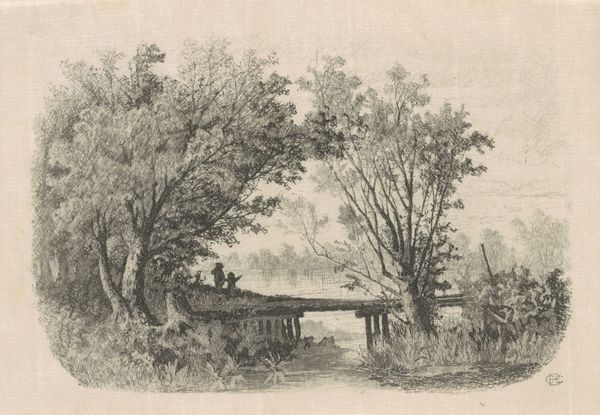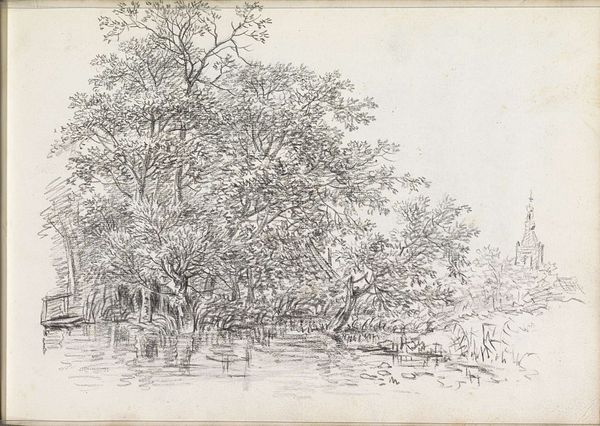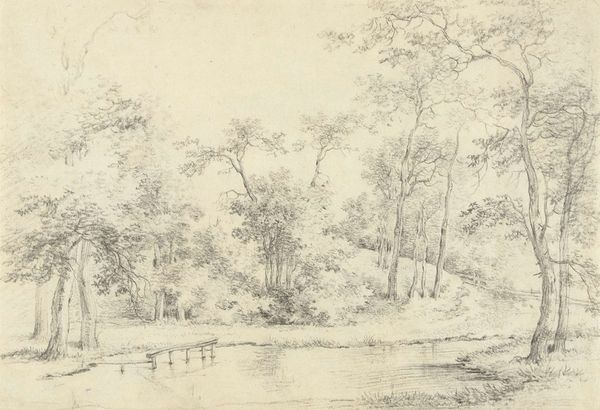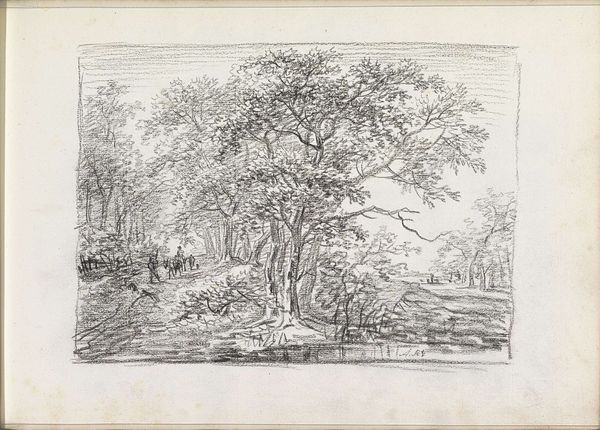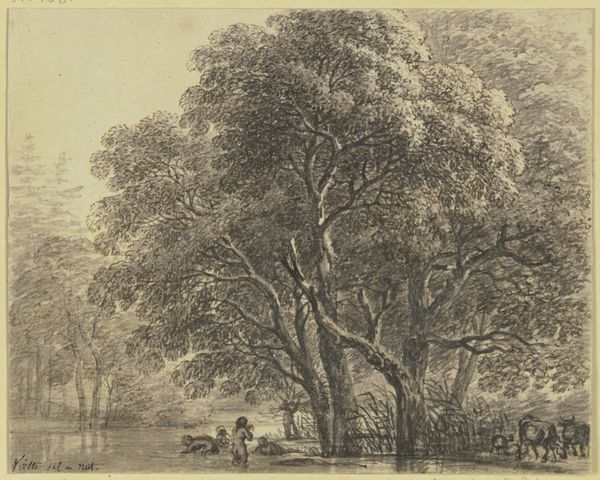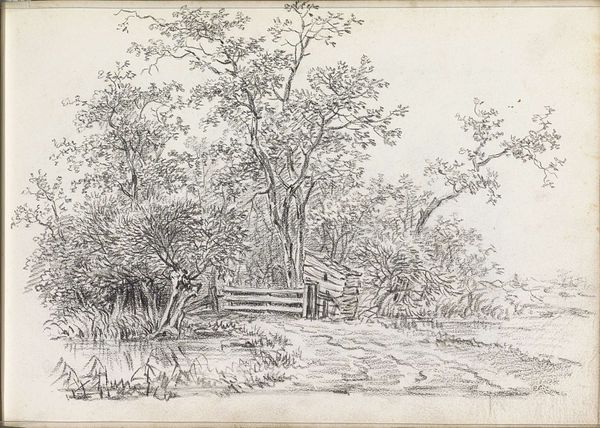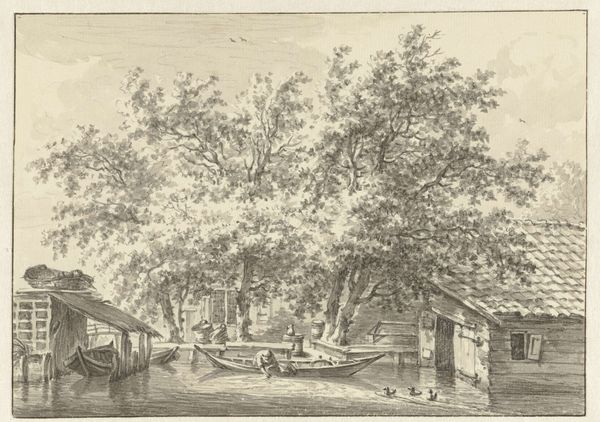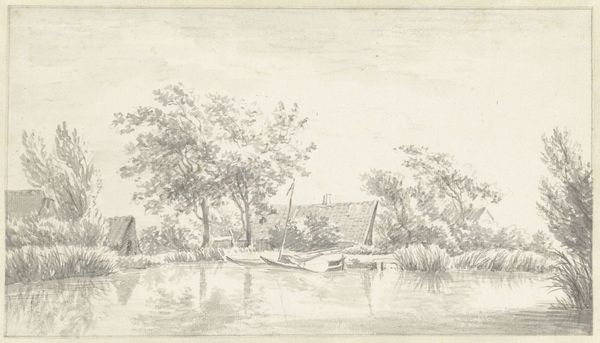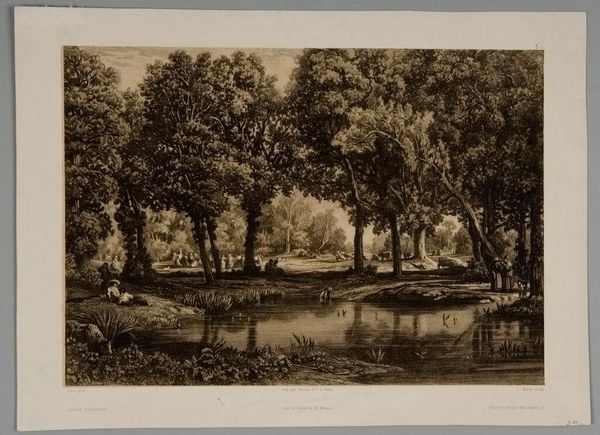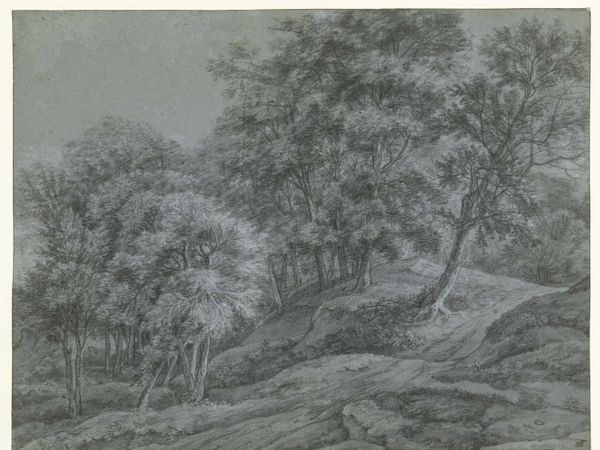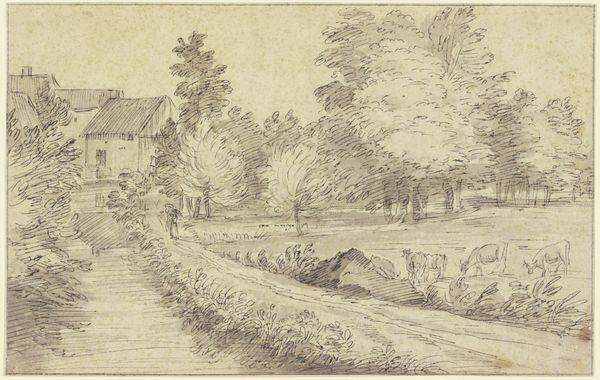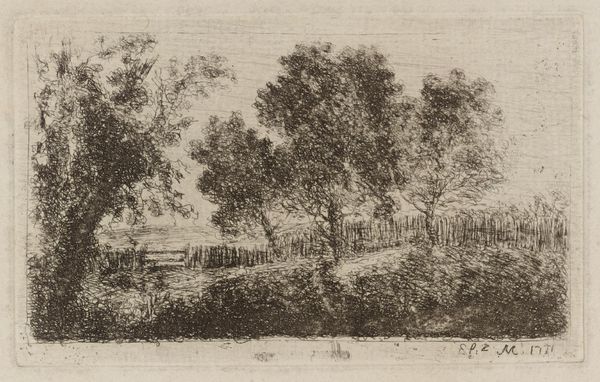
drawing, pencil
#
pencil drawn
#
drawing
#
dutch-golden-age
#
pencil sketch
#
landscape
#
form
#
pencil
#
line
#
realism
Dimensions: height 353 mm, width 468 mm
Copyright: Rijks Museum: Open Domain
Editor: This is "Farmhouse Surrounded by Tall Trees," a pencil drawing by Anthonie Waterloo, made sometime between 1619 and 1690. There’s something so peaceful about it. The way the trees are drawn, it feels both meticulous and free-flowing at the same time. What strikes you when you look at it? Curator: I'm interested in how Waterloo’s depiction of the rural intersects with the growing urbanization of the Dutch Golden Age. The Dutch landscape tradition wasn't just about pretty scenery. How do you think this idealized vision of rural life functioned in a society that was increasingly driven by commerce and global trade? Editor: That's interesting! I hadn't thought about it in terms of the push and pull between the urban and rural. So, it’s not *just* a pretty landscape, it’s a statement? Curator: Precisely! Consider the politics embedded within seemingly simple landscapes. For whom was this idealized rural scene created, and what social values did it reinforce or perhaps even conceal? What aspects of rural life are conspicuously *absent* from this drawing? Editor: Well, it’s pretty idyllic, isn’t it? There aren’t any people working, really... just one man in a boat. And everything looks very well-kept. It hides the hard labor. Curator: Exactly! The drawing might reflect a yearning for a simpler time, or perhaps it’s catering to a wealthy merchant class looking for an escape. Do you think art should necessarily be overtly political to be considered an activist work? Editor: Not necessarily. I guess even seemingly apolitical art like this can reveal the values and biases of its time through what it chooses to show – and what it leaves out. I’ll definitely be more aware of those absences now! Curator: It's all about peeling back those layers, seeing the artwork not in isolation but as a product of complex socio-political forces. Always question what realities might be obscured by idealized portrayals, it's important work.
Comments
No comments
Be the first to comment and join the conversation on the ultimate creative platform.
